
What is the World’s Purest Gold Coin?
Contrary to general perception, not all gold articles are fully gold. While gold coins and gold bars are the purest forms of commercially available gold compared to jewelry, they aren’t necessarily 100% pure either.
There is a massive range of gold coins one can buy — including the Canadian Gold Maple Leaf, Austrian Philharmonic, American Buffalo, etc. And the amount of gold each of these coins has could vary.

The oldest gold coins (minted during the 1800s and earlier) typically were 22 karats or 90 to 92% gold. The majority of the gold coins or bullion coins made currently have a lot more gold than that. Exceptions include alloyed gold coins, such as the South African Krugerrand and American Gold Eagle, less than 92% gold. The remaining 8% is other metals (silver and copper).
So, what about the much purer gold coins? In this article, we’ll take a look at:
- The purest gold coins in the industry.
- What makes a gold coin “pure”, and what does “fineness” denote.
- How the fake or impure coin business is diluting the gold bullion coins market.
- Answers to some important questions you may have as an investor.
Before getting your hands on the world’s purest gold coin, it’s critical to educate yourself about gold bullion coins, gold purity, what fine gold is, and more. This article intends to do just that. Read on.
Table of Contents
Defining the “Purity” of a Gold Coin
The amount of gold in a coin denotes its “fineness”, which is expressed in “thousandths” or as “per mil”. For example, a .999 fine gold bullion coin is 999/100 absolute gold, with the remaining 1/1000 being impurities. Karat weight denotes gold’s fineness. The fraction-based system employs a 24-part system. A piece of 24-karat gold is pure gold.
A fineness of 1.000 is technically pure gold or 24 karats. But because 100% gold is malleable and not ideal for ingots or coinage, 0.999 fineness is generally accepted as 24K gold. 23K gold is .958 fine, and 22 karats denote a fineness of 0.917. 10K, or the minimum karat requirements for a gold article to be considered “gold”, indicate a fineness of 0.417.
For better understanding, the decimal numbers denoting fineness are converted to percentage figures — for instance, .900 fineness means 90% pure gold, and .850 fineness indicates 85% purity.
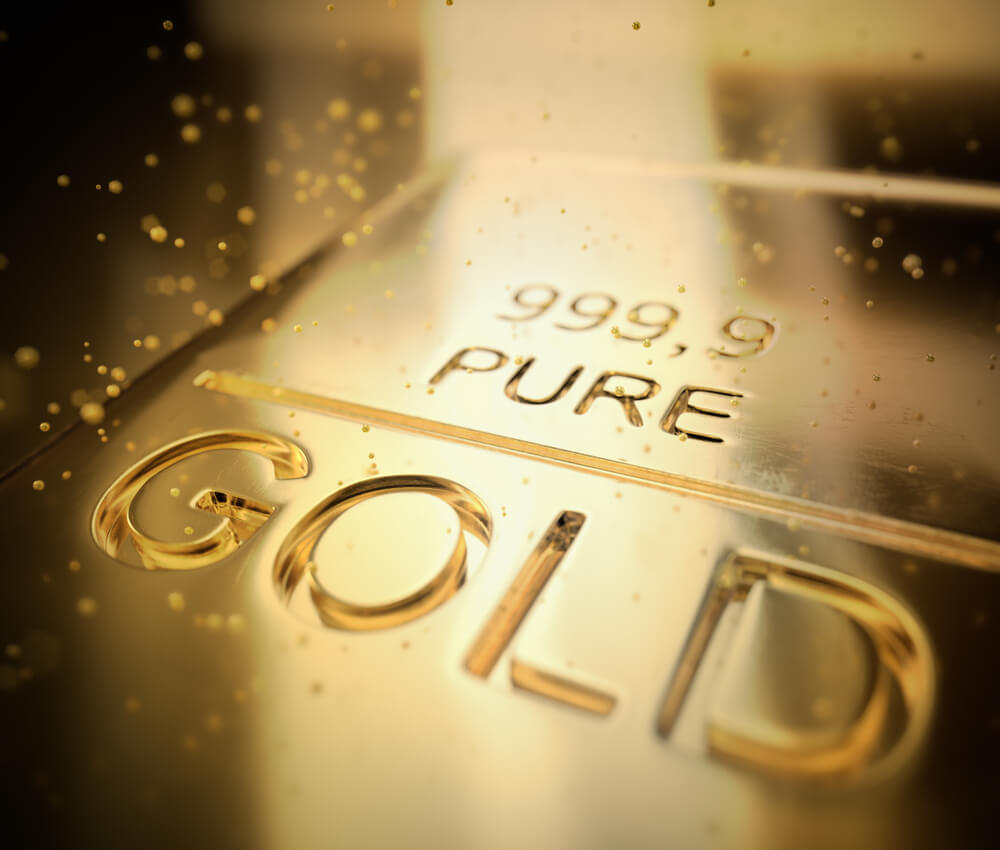
The Purest Gold Coins in the World
If we were to put down all pure or 24-karat gold coins floating around, the list would be never-ending. Therefore, for the sake of brevity and your sanity (also mine), we’ve significantly narrowed down the list to gold coins recognized worldwide.
P.S. Gold coins minted during the 1979-1982 period had a .999 fineness. The coins produced after 1982 were .9999 or greater.
Gold Maple Leaf
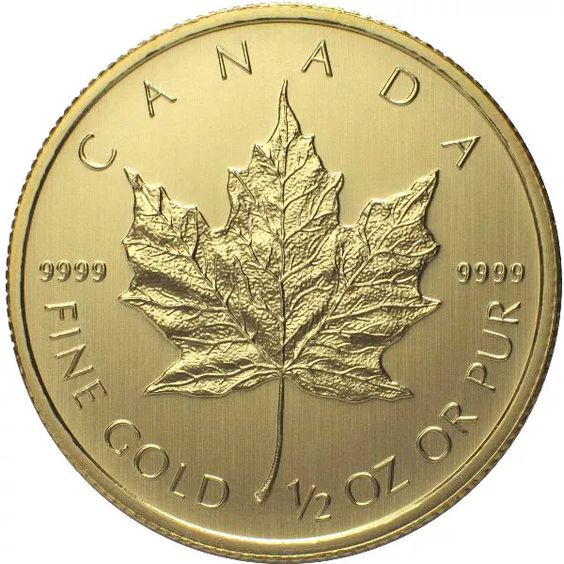
The Canadian Gold Maple Leaf, issued by the Government of Canada annually, is a 24-karat gold bullion coin or has a millesimal fineness of .9999. In some cases, it is .99999. With a CAD50 face value, the coin’s total weight is 31.10 grams (one troy ounce). Other denominations and sizes exist as well.
The Maple Leaf design is pretty straightforward and hasn’t changed much over the years. The obverse features the Majesty Queen Elizabeth II of Canada’s image. The reverse side, quite fittingly, has the picture of the maple leaf.
The Maple Leaf gold coins the Royal Mint produced before 1982 were .999 pure. The coins produced after that were slightly more pristine at .9999. The Maple Leaf has had unique issues too, which are .99999 pure. Unlike the .9999 replacing its predecessor, the .99999 coin is a special edition coin.
In May 2007, the Royal Canadian Mint came up with a 220-pound (100 kg) gold coin. Its face value was $1 million, though the amount of gold in it was worth more than $2 million at its launch. In 2012, the Royal Canadian mint came up with the Queen’s Diamond Jubilee gold coin. It was 99.999% pure gold and had a $300 face value.
Read More: Detect Counterfeit Gold Coins
American Buffalo
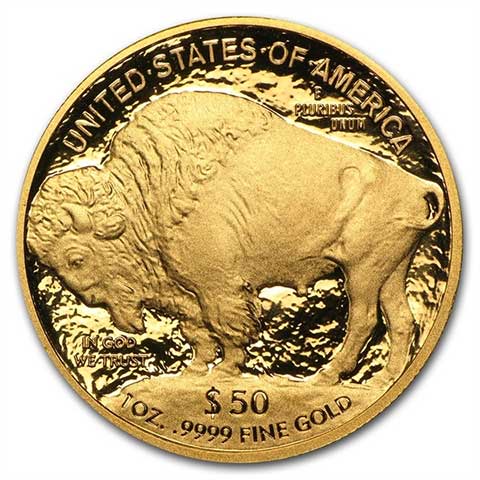
The American Buffalo is a 24-karat gold bullion coin first launched by the US Mint in June 2006. Also referred to as the Gold Buffalo, it is the first general-use gold coin by the United States Mint to have .9999 fineness.
The Buffalo was created with coin collectors in mind. They were turning to neighboring country Canada’s Gold Maple Leaf for its 99.99% purity, which the American Gold Eagle’s 91.67% gold content couldn’t come close to. The Buffalo was a solid option for American investors who wanted something homegrown.
Since the coin is 24-karat gold, the rising gold prices have rendered it a lot more valuable than its $50 face value. The gold coin’s melt value was $800 in 2006. In a year, the value went up by more than 10%, to $900. In 2009, it was valued at $1,410, and $2,010 in 2011.
The proof coin’s mintage was limited to 300,000 coins, contributing to its gradually increasing value. The coins, of course, have to be in mint condition and come in their original hardwood box, alongside their authenticity certificates, to fetch the prices they command.
Austrian Philharmonic
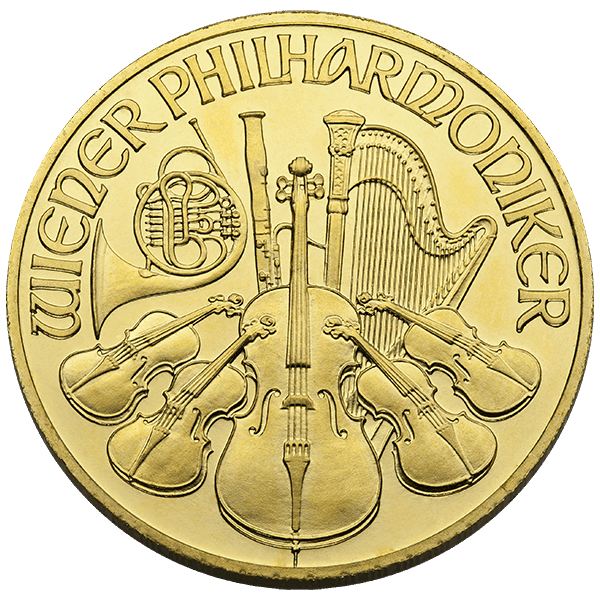
For many investors in Europe, an Austrian Philharmonic gold coin produced by the Austrian Mint will be a more pragmatic or close-to-land option than a Canadian Maple Leaf or an American Buffalo coin. Available in platinum, gold, and silver, the gold bullion coin is 99.99% gold or has a fineness of 0.9999.
Also called the Vienna Philharmonic or just Philharmonic, the coin is named after Austria’s famed Philharmonic orchestra that also served as inspiration for the coin’s design. The gold coin was introduced in 1989 and is one of the best-selling bullion coins in the world. The design has remained the same ever since its inception, except for the changes in year inscriptions.
The 24-karat coin’s face value is €100. But like every other pure gold bullion coin, its market value is significantly higher. Despite being legal tender only in Austria, the Vienna Philharmonic is the only European bullion coin with its face value in euros.
Australian Gold Nugget
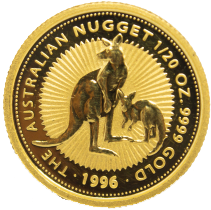
The gold bullion coin, Australian Gold Nugget, is minted in multiple denominations and is legal tender. The gold coin boasts a fineness of .9999 or is 99.99% pure.
First introduced in 1986, it’s among the few gold bullion coins to have a design change every year. The design variations are more common among the lower denomination coins, however. The unique designs and the limited yearly mintage afford the coin a certain numismatic charm and value, increasing its worth more than the gold it constitutes.
Perth Mint, which makes the Australian Gold Nugget, came up with a gold coin weighing a ton, breaking the record held by the aforementioned Big Maple Leaf for the most valuable and largest gold coin. It is 4.7 in (12 cm) thick and 31 in (80 cm) in diameter. The coin’s face value is A$1 million but valued more than A$53 million when launched.
The Krugerrand
Let’s state this right off the bat, the South African Krugerrand isn’t one of the purest gold coins in the world. It comes in 22K and has no 24-karat version. But it deserves mention in any list of coins with gold bullion DNA due to its historical significance and the fact that it paved the way for the other coins mentioned above.
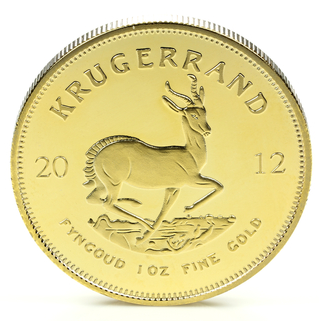
First introduced in 1967, the Krugerrand was meant to facilitate private gold ownership and international trading for South Africans. Krugerrand coins have zero face value but are still considered legal tender. The value of a Krugerrand is purely based on the amount of gold it constitutes, which alters with fluctuating gold prices.
The name “Krugerrand” is a portmanteau. “Kruger” denotes Paul Kruger, the president of South Africa (1883 to 1900). The coin’s face has the image of the president. The coin’s reverse features a sprinting springbok antelope’s image. “Rand” is the national currency of the Republic of South Africa.
The Scary Counterfeit Gold Coin Trade
Pure gold coins are plenty in supply. Coins that are even more abundant are fake gold bullion, trying to steal the glory from real coins and hurt prospects of honest dealers and traders.
Any gold coin that is not what it’s claimed to be is counterfeit. Those claims could pertain to the coin’s manufacturing, alloy ratio, design elements, etc. While coins marketed as gold but not comprising any are undoubtedly fake, those with lesser gold content than advertised are also counterfeits.
Metals commonly used in fake gold coins include tungsten and depleted uranium. Between the two, tungsten is widely available and, therefore, more suited for imitation. Gold and tungsten do not mix as alloys, but a thin sheet of gold plating tungsten is a widespread falsification practice.
Gold bullion coins were previously not that easy to imitate. The costs attached to replicating the coin features were costlier than the original coin’s value. Dupes, therefore, were hard to find. However, in recent times, fake bullion coins have flooded the market like never before, making it difficult for even coin dealers to discern replica coins from the real ones.
Luckily, the dimensions and weight of a Maple Leaf or any coin with 0.999 fineness are almost impossible to replicate by tungsten-cores plated by gold as tungsten has just 99.74% of the relative density of gold.
In the case of alloyed or 22-karat coins, such as the Krugerrand and the American Eagle, you can execute imitations with relative ease. But, fortunately again, you can identify the falsifications by testing the coin’s electric resistance, acoustic, or magnetic traits.
As a general buyer, it’s highly advised you procure your coins from a reliable and trustworthy precious metals dealer because you may not want to put your gold through the testing mentioned above.
Read More: What is the Gold Standard
Conclusion
Fineness would be the principal or only determinant in an alternative world where gold coins are valued purely on their gold content. In reality, however, the purity of gold coins is one of the multiple aspects ascertaining value.
Therefore, if you’re looking to buy gold coins for investment, cover all the bases: purity, rarity, historicity, and physical condition. Perhaps, the most vital aspect is the coin’s authenticity.
If you don’t know much about gold coins but would like to buy a few to include in your investment portfolios or hedge inflation and not worry about the build and integrity of the coins, purchase them through a gold IRA company.
FAQs
Why are modern gold coins higher on the purity scale?
Modern coins are primarily devised to function as bullion coins and commemorative coins to attract investors and collectors. Earlier, gold coins were used as currency and less as an investment. They, therefore, had to constitute slightly lesser gold so that they could be more resilient.
While modern pure gold bullion coins could also be used as currency, they usually are not or rare to find in public circulation. The value of the gold in them invariably surpasses their nominal values. The American Eagle, for instance, bears the $10 denomination, but its metal value exceeds $800.
Is purity the only value determinant of a gold bullion coin?
While the melt value of a gold coin significantly contributes to its worth, other factors also ascertain its market price, including age, rarity, condition, etc. For example, most gold coins minted during the 19th century are worth more than the amount of gold they comprise.
Some gold coins are worth millions — such as the Aureus. The extremely rare coins are highly sought after by collectors. In 2002, a rare 1933 Double Eagle coin was auctioned off for $7.5 million.
The US Mint struck around 445,000 Double Eagle gold coins in 1933. But since most of them were relinquished and melted down courtesy of Executive Order 6102, the remaining coins assumed the “rare” status and became highly coveted.
Why are not all gold coins 24 karats?
Gold is a relatively soft metal. To lend it rigidity or increase durability, adding stronger metals to the mix is standard practice. Compared to jewelry, gold coins are not as diluted due to their relatively straightforward shapes and designs. But many gold coins, especially the ones in circulation, are not entirely made of pure gold due to the mottling concerns they may present while changing hands.
The 24-karat Gold Maple coin, for instance, has been criticized for being too soft to handle. The clear-field, milled edge around the Queen in the coin is prone to scuff marks. The more intricate the design, the more prominent the finger and usage marks on pretty much any 24-karat gold coin. And that is why there’s no 24-karat Krugerrand.


